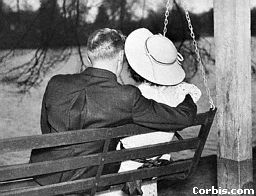 |
 |
 |
 |
 |
 |
 |
 |
 |
 |
 |
 |
 |
 |
 |
 |
 |
 |
 |
 |
 |
 |
 |
 |
 |
 |
 |
 |
 |
 |
 |
 |
 |
 |
| RETURN HOME |
|
SCREENWRITING TIPS |
|
PRE-PRO TIPS |
|
CHECK THESE OUT |
|
|
|
|
|
|
|
| FILM SCHOOL BASICS |
|
|
|
What every filmmaker should know. |
|
|
|
 |
|
|
|
CHOOSING THE RIGHT LENS |
|
|
|
| For more details, The Bare Bones Camera Course for Film and Video is basic and easy to read. A more comprehensive reference is The Filmmaker's Handbook. You can search for these and other books on filmmaking at BARNES & NOBLE online. To connect now, CLICK HERE! |
|
|
|
|
Which lens to use is a decision important to the look and feel of your film. They determine, primarily, the PERSPECTIVE and DEPTH OF FIELD of your shots. Hopefully, you'll have a competent DP who'll know everything I'm writing about here. But if you can't get a good DP or if you choose to do your own camera work, you'll need to know these basics. Even if you have a good camera operator who knows what he's doing, these points will help you communicate effectively and make sure you're getting what you want. |
|
|
|
|
|
Lenses are identified by focal length -- 10 mm, 25 mm, 100 mm, and so on. Without getting into the physics of lenses, suffice to say that shorter lenses are WIDE ANGLE lenses, and longer lenses are TELEPHOTO or close-up lenses. The 25 mm lens is considered the "Normal" lens, its image nearest what our own eyes see.
Most likely, the camera you use will have a ZOOM LENS. This lens can be adjusted from wide-angle to telephoto, or anywhere in between. The principles of the different lenses apply to zoom lens settings as well as to individual lenses.
The photos below illustrate the wide angle and telephoto lenses, and we'll refer to them for comparison. But to start with, let's define the necessary terms. |
|
|
|
|
|
Do the Right Thing, Citizen Kane, The Insider, and many other films on video can be bought by clicking HERE. |
|
|
|
|
|
|
|
|
|
PERSPECTIVE is the more familiar term, and is common to most visual arts. It refers to the illusion of depth in a two-dimensional picture. Objects closer to the viewer appear larger, objects farther away appear smaller. That, in a nutshell, is perspective.
DEPTH OF FIELD is a little more complicated and is unique to photography. It refers to the area in front of the lens in which objects appear in focus. When the lens is focused on a specific point, the area beyond that point in which objects will remain in focus is determined by depth of field. Let's look at some photos which should illustrate these principles. |
|
|
|
|
|
|
|
|
WIDE ANGLE |
|
TELEPHOTO |
|
|
|
 |
|
|
 |
|
|
|
|
|
|
The wide angle (or SHORT) lens exaggerates perspective in a scene, making foreground and background appear more removed from one another. The short lens also has an increased depth of field. Notice in the photo above that the people, the archway, the building and the trees are all in focus. Short lenses are commonly used for showing scenery or for showing a person in relation to his or her environment. A person's face shot in close-up with a short lens becomes distorted -- the nose seems bigger while the cheekbones, chin and forehead seem to recede into the distance. The effect is sometimes used for comic effect, although Spike Lee used it to good dramatic effect in Do the Right Thing. Orson Welles was fond of staging his action in front of wide angle lenses and even used special lenses to increase depth of field. In Citizen Kane especially, notice the scene in which young Kane's mother is signing him over to a new guardian in the foreground, the boy's father watches from behind them, while through a window behind him we see young Kane playing in the snow. That's depth of field in the extreme. |
|
The telephoto (or LONG) lens has the effect of flattening perspective. Notice in the above photo, the distance between the people and the trees is harder to judge. Also, this lens has a much shallower depth of field. While the couple is in sharp focus, the hanging branch just beyond them appears a little soft. The field and the trees are vague suggestions, almost like an impressionist painting. Long lenses are commonly used for directing attention to one area by keeping the rest of the scene out of focus. Dialogue is often shot in close-up with a long lens, cutting from one speaker to the other. Sometimes two characters will appear in the same telephoto shot, and the camera operator will adjust (or PULL) focus from one to another as each one speaks. Telephoto lenses also magnify camera movements, so hand-held shots with a telephoto lens are more noticably shaky and unsteady.
Take a look at Michael Mann's The Insider. The film is practically a textbook for long-lens cinemetography. The jittery, claustrophobic nature of the telephoto lens is a perfect fit for the film. |
|
|
|

